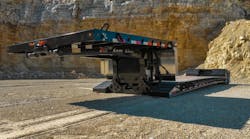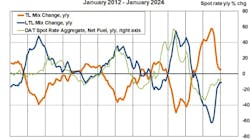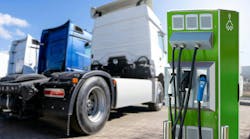A coalition of food companies and retailers is urging federal regulators to crack down on reducing trucking emissions and increasing fuel economy, according to Sustainable Brands.
Led by advocacy group Ceres, 12 companies – including General Mills, Ben & Jerry’s, Stonyfield Farm, Clif Bar, and Annie’s – wrote a letter to the EPA and National Highway Traffic Safety Administration asking them to resist efforts to weaken proposed trucking regulations.
According to the report, the coalition seeks a 40% reduction in fuel usage from heavy fleets by 2025. The federal proposal seeks a 36% savings by 2027.
As Seth Sparks pointed out in Trucks.com in response to the letter: “The trucking industry is carefully monitoring the federal government’s efforts to increase emissions and fuel economy standards. It’s a thorny issue because savings could be achieved in a variety of ways that include improvements to truck tractors, trailers, tire technology and other equipment. How much each component of a big-rig should contribute to savings and how it all fits together when so many manufacturers are making different parts of semi-trailer truck remains an industry debate.”
According to the Natural Resources Defense Council, tractor-trailers, buses, delivery vans and other trucks emit 23 percent of carbon pollution from the transportation sector but account for only about 4 percent of the vehicles on the road.
The American Trucking Associations (ATA) responded in October in support of the proposed standards but voiced a number of concerns, including the cost of the technology needed to meet the standards and requirements for add-on equipment for tractor-trailers. The group said the goal of the standards should be to “achieve the greatest efficiency improvements at the least overall cost while minimizing downtime, maximizing durability, and recognizing a positive return on investment over the course of equipment ownership.”
The full article from Sustainable Brands is available here.








